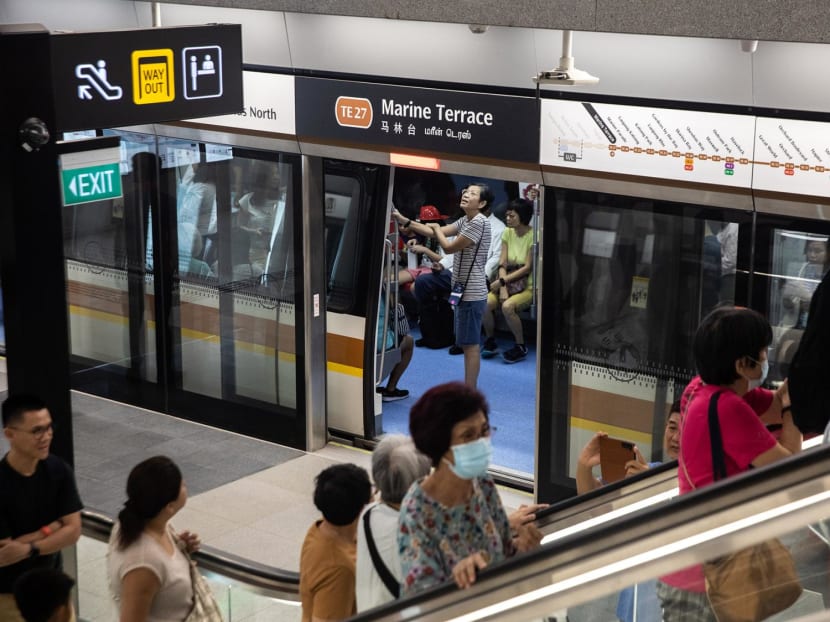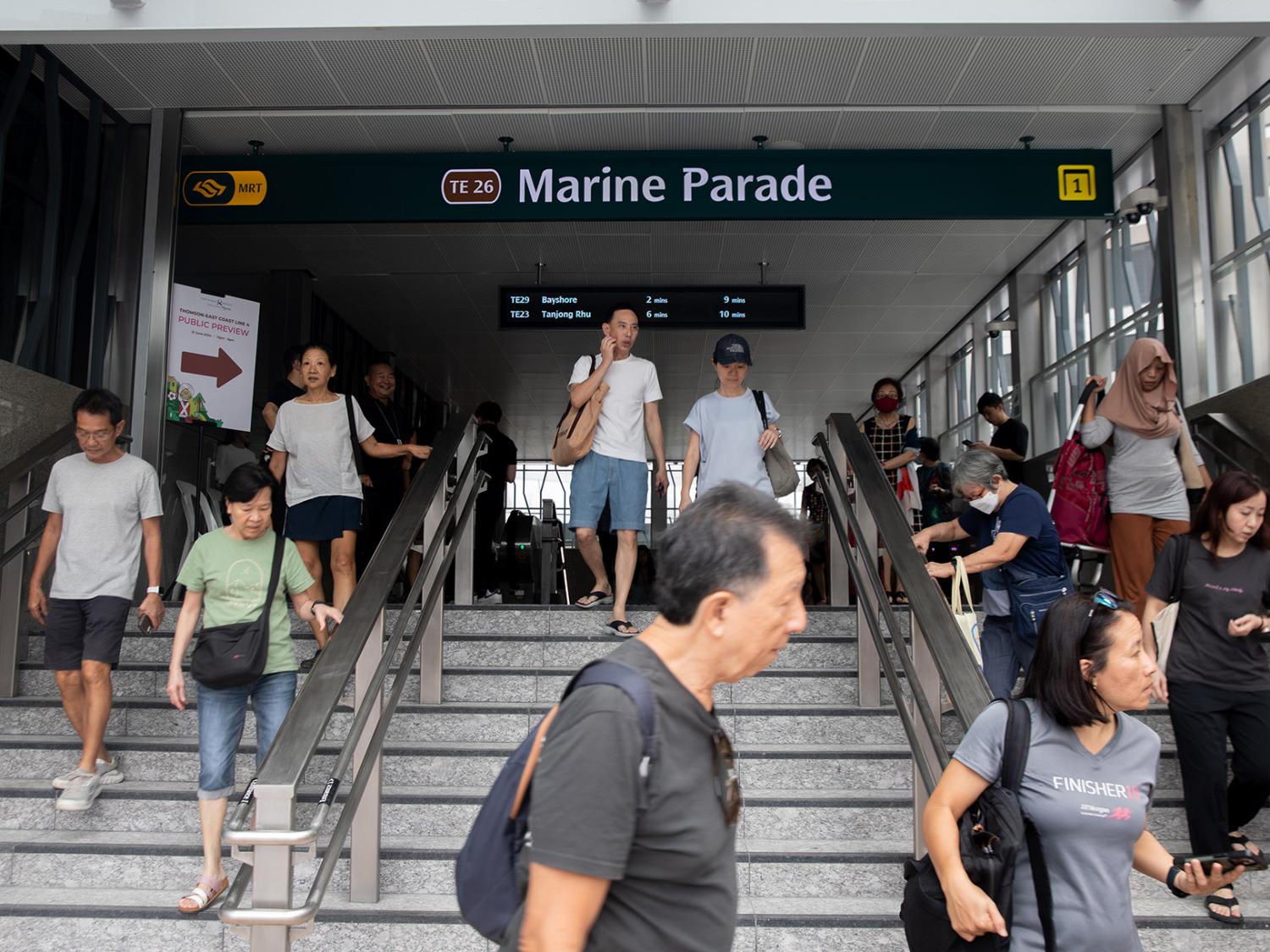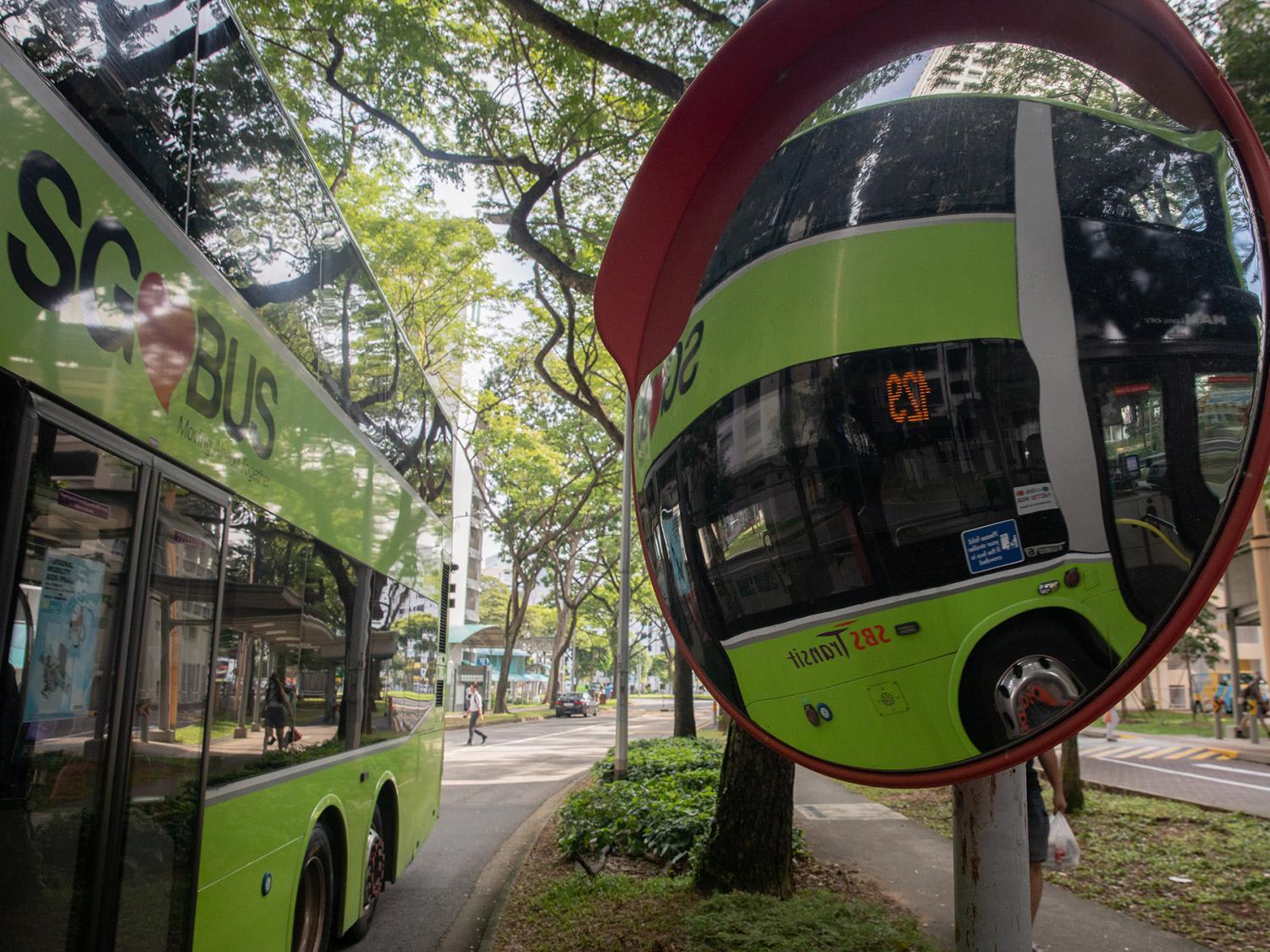The Big Read in short: Amid the MRT network expansion, how connected is Singapore?
SINGAPORE — Living in Tanjong Katong, information technology consultant Benny Kosasih’s daily commute to the central business district can be unpredictable.

Singapore’s public transport system has achieved significant milestones and has ambitious plans ahead, but there are some who feel they have fallen through the cracks where connectivity is still not optimal.

This audio is AI-generated.
Each week, TODAY’s long-running Big Read series delves into the trends and issues that matter. This week, we look at how connected Singapore's land transport system is even as the country ramps up its rail network in the coming decade. This is a shortened version of the full feature, which can be found here.
- The opening of seven new Thomson-East Coast Line stations brings Singapore closer to its goal of having eight in 10 households within a 10-minute walk of a train station by the 2030s
- However, residents of some estates in both far-flung and central parts of Singapore still lack direct MRT access and rely primarily on buses
- These residents hope for better inter-town connectivity, as public transport journeys to other areas often take an hour or more and much longer than by car
- Suggestions to improve connectivity include having express buses and more frequent feeder buses, given that it is not realistic to expand the rail network to every estate
- Experts say that Singapore is well-connected by global standards, and explain why comparisons with the likes of London, Tokyo and New York can be tricky
SINGAPORE — Living in Tanjong Katong, information technology consultant Benny Kosasih’s daily commute to the central business district can be unpredictable.
On good days, the trip would take just 25 minutes. On bad days — when he misses the bus to Bugis MRT Station where he then hops onto a train to Downtown Station — it stretches to about 40 to 50 minutes.
But with seven new Thomson-East Coast Line stations starting passenger service on June 23, the 41-year-old's commute to work has become smoother.
There is now a Mass Rapid Transit (MRT) line that takes him from Tanjong Katong directly to Shenton Way, just opposite his office, eliminating the need to take a bus and shortening his commute to just 15 minutes.
“I’m really excited about it. But it’s not the same for my wife because her office is at Telok Ayer. Taking the bus to Bugis Station as I did is still the fastest way for her,” said Mr Kosasih, who travels to work with his wife Yuka, a 32-year-old sales manager.
The new Thomson-East Coast Line stations opened to much fanfare, as residents living in areas such as Bayshore, Siglap, Marine Parade, and Tanjong Rhu can now enjoy the long-awaited convenience of getting to town via the MRT.
Those bound for Maxwell, Outram Park, and Orchard stand to gain the most, given that previously, bus journeys could take up to an hour, or about twice the time compared to now with the new MRT service.

More MRT stations are also coming up, with the Jurong Region Line and Cross Island Line slated for completion in the late 2020s and early 2030s respectively, linking western Singapore with the eastern and northeastern regions.
By the 2030s, eight in 10 households in Singapore will be within a 10-minute walk of a train station.
There are now over 140 stations spread across six MRT lines, covering over 230km and catering to a daily ridership exceeding three million.
The aim is to increase this to 360km by the early 2030s.
To do so, the Government plans to invest more than S$60 billion in the rail network this decade.
And under the Land Transport Master Plan 2040, the ultimate goal, at least by 2040, is to transform the nation into a “45-minute city” with “20-minute towns”.
This means that anyone can:
- Walk, cycle or ride to the nearest neighbourhood centre within 20 minutes
- Travel between their home and workplace during peak periods in less than 45 minutes
To that end, the Land Transport Authority (LTA) will expand the rail network and active mobility network (for walking and cycling), improve bus speeds, and grow the number of employment centres outside the central business district.
WHY IT MATTERS
While Singapore’s public transport system has achieved significant milestones and has ambitious plans ahead, there are still areas for improvement, residents and transport analysts told TODAY.
Connectivity between towns is one such area.
For instance, while a private-hire vehicle ride from Punggol to Canberra takes about 25 minutes, the travel time via public transport is nearly doubled.
Notably, the same issue also affects those who live and work in some centrally located areas such as Balestier and Whampoa.
Despite being in the middle of Singapore, some residents in the area feel that they might have fallen through the cracks as connectivity is still not optimal.
Shop assistant Kenny Neo has to take three buses from his home in Bukit Batok to his workplace in Balestier, which has no nearby MRT stations, even with the rail expansion.
"Even though Balestier is in the central area, I wouldn't say it's well-connected. If you were to go to town, it's convenient, but to other places, and coming from other neighbourhoods, it's not convenient for me," said Mr Neo, 50.
Residents interviewed also spoke of the need to enhance bus services and frequencies so that they do not have to wait a long time.
In Changi Village, Mr Hanif Mohamad, a 24-year-old hawker, said it might be worthwhile for LTA to consider providing new express bus services so that residents and people from nearby towns, such as Pasir Ris, Bedok, and Tampines, have a more efficient way of getting there.
“I live in Bedok, and it takes me 40 minutes to get here by bus. If I were to come here for food, it doesn’t make sense because I would be so hungry by the time I arrive.”

Currently, the nearest MRT stations at Pasir Ris and Upper Changi is a 30-minute bus ride away, while travelling to the planned Loyang Station along the upcoming Cross Island Line will still take 15 minutes.
At present, Singapore has about 40 express bus services, which skip bus stops or travel by expressways. None of them connect Changi Village to the suggested towns.
At Admiralty Link, executive assistant Mardiana Madi, 35, said that while the bus taking her from her estate to Sembawang MRT Station has good frequency during peak hours on weekdays, it slows down significantly during non-peak periods and weekends.
“If I miss the bus, the next one is 15 to 20 minutes away. I’d rather walk to the train station since it takes about the same time on foot.”
In situations like Ms Mardiana's, bicycles and personal mobility devices (PMDs) were often used to bridge first- and last-mile connectivity gaps before 2019, but the latter was banned on footpaths due to a worrying increase in PMD-related offences.
Transport experts told TODAY that PMDs have the potential to serve as a mode of transport for short and medium-distance travel, but the infrastructure needed for the safe coexistence of these devices with pedestrians and cars is lacking.
THE BIG PICTURE
Singapore University of Social Sciences' transport economist Walter Theseira said that the situations faced by residents in certain towns are not unique, as the MRT network was originally designed to transport people from housing estates on the outskirts to the city centre.
Hence, the network falls short in linking peripheral areas.
So, is Singapore's public transport system as well-connected as numerous international surveys make it out to be?
Assistant Professor Terence Fan from the Singapore Management University said that Singapore may be well-connected by global city standards, but within the local context, there is room for improvement.
He explained that, unlike other cities, many residents in Singapore do not own private vehicles, and taxi and private-hire rates are high, so a reliable transport system is essential.
“Very often, if you live in the wrong part of the island, you can’t take jobs and meetings that are further away. And this is something our transport system should aspire to address,” said Dr Fan.
With that being said, however, transport analysts also told TODAY that comparing the travel times of public and private transport is not a fair method due to several factors.
Transport engineering consultant Gopinath Menon said that public transport will always be slower than private transport in a country like Singapore, where “acute” traffic congestion is rare due to strict controls on private vehicle ownership, especially of cars.
Likewise, Associate Professor Theseira said that travel times alone does not capture the full picture, as Singapore's unique context combines public transport efficiency with residential and workplace choices, earning power, and job concentration.
He noted that jobs are mainly concentrated in the central business district and secondary business districts like Jurong, while most middle- and lower-income residents live in outlying public housing estates, leading to longer travel times.
Conversely, high-income groups often have shorter commutes due to car ownership and proximity to public transport, he added.
As for the LTA's 2040 master plan, transport analysts described its goals of 25-minute towns and a 45-minute city as ambitious but within reach.
However, beyond the time targets, Assoc Prof Theseira emphasised the importance of examining transport equity. This means ensuring that people living in different parts of Singapore and with varying economic statuses have access to decent transport options.
"It's not just about improving the average (travel time) but making the distribution more uniform so that no Singaporeans are strongly disadvantaged."

THE BOTTOMLINE
Despite some gaps, Singapore's public transport system has consistently ranked high in international surveys and is described as “world-class”, putting the Republic on par with other major cities such as Hong Kong, London and Tokyo.
While Singaporeans started to enjoy the benefits of having an MRT system just some 40 years ago, Londoners have had a much longer experience of going “underground”.
London’s Underground, or the Tube, which opened in 1863, is one of the oldest and most extensive subway systems globally, with 11 lines spanning 402km.
Another major city’s transport system often compared with Singapore's is the New York City Subway, the largest in the world by the number of stations (472).
Despite its vast coverage and 24-hour operations, the system faces challenges such as delays, ageing infrastructure, and cleanliness issues, areas where Singapore's system excels, according to Mr Jay Suresh, a 21-year-old American citizen who works as an intern at a technology firm here.
Just by looking at the maps, although New York and London boast much more complex networks, transport experts said it is difficult to make an apple-to-apple comparison with Singapore as the contiguous built-up areas and characteristics of different cities are not the same.
Assoc Prof Theseira said that while some common metrics could be considered, such as the average amount of time spent on public transport, he cautioned that it might not be the most objective way of comparison.
This is because the common metrics are often influenced by other policies, such as traffic congestion control measures, the general layout of the city, and the overall quality of the public transport network.
“People could be spending more time on public transport because a city is poorly connected or there is a lot of traffic congestion.
“We have to look at it from a holistic point of view as the city’s context and public transport objectives will have an impact,” he said, adding that this combination makes direct comparisons between different cities a bit tricky.










